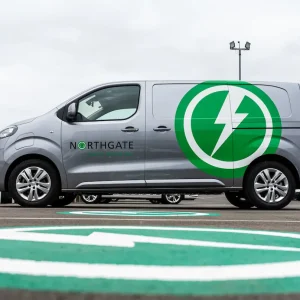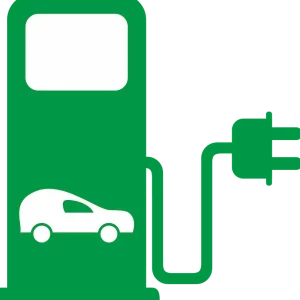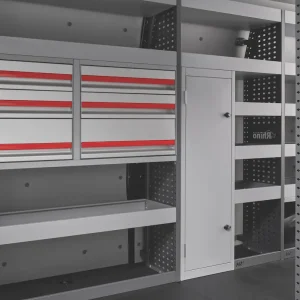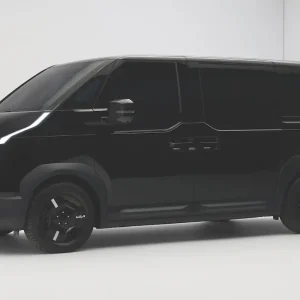According to Xavier Peugeot, vice-president of Groupe PSA’s Business Unit for Light Commercial Vehicles, “the light electric vehicle market will be 10 times bigger by 2025”. Ambitions and punitive CO2 targets mean that the entire automotive industry is placing its bets on electrification, and consequentially the next 12 months will see an unprecedented number of electric vehicles hit the light commercial vehicle segment. Renault, Maxus, Mercedes-Benz, Volkswagen and Fiat will all be in on the act and so will Groupe PSA (Peugeot, Citroen and Vauxhall). Of all the manufacturers, its plans seem perhaps the most ambitious with the electrification of the full LCV range, with passenger variants added into the mix as well. But 2025 is, relatively speaking, a long way away and ambitions to challenge fellow French manufacturer Renault for its 46% share of the electric van market means the entire PSA range will be electrified by 2021.
Mid-sized vans have long been in the most competitive of all the segments, but as alternative-fuelled and zero-emission vehicles they are noticeably absent due to their middle-sized and highly variable use.
Finding the perfect balance for an EV audience in a wide-ranging sector has been something of a challenge, but as battery and motor technology improves manufacturers are ready to take on the challenge, with medium electric vans now being prioritised. The Citroen eDispatch, Peugeot eExpert and Vauxhall Vivaro-e outline the ambitions and expectations of what will be a highly competitive segment, with arguably the most important vehicles being launched first. Small electric vans, led by the Renault Kangoo Z.E. and Nissan eNV200, have often been the starting point for manufacturers, and while there is an electric version of their previous-generation small van within PSA, this new vehicle signals a level of maturity in the market for EVs where larger products with more use cases become necessary.
“We need to provide our customers with high-level answers,” Peugeot explains. “They have a wide range of needs, and high standards of expectations. This was true for thermic products and has to be true for electric versions. Which is why we will continue to offer a full matrix of electric vans, using the length and mixing them with the versions available that already exist.”
Aware that emissions regulations will soon begin to constrain diesel sales, PSA’s medium vans will cover the full range of their current diesel variants, without any major loss of functionality. While regulations governing the access to cities continue to evolve, the cities themselves do not.
“When we initially designed and built our medium van offer, we had a key choice, which was the height of the van – 1.9m, to be able to enter car parks. We know that more than 50% of them go two to three times a week in such city centre car parks. Switching to electric versions should not modify this. LCV versions will still have a high-level payload up to 1,275kg.”
As with all electric commercial vehicles whose batteries are under the floor, the load space remains unchanged, which means a carrying capacity of up to 6.6m3, but the trio will also still have the compact version available, which has a 4.6m overall length but still with a 5.1m3 carrying capacity – ideal for an urban environment and within the same footprint as the small PSA vans but with almost twice the payload and 50% more cubic capacity. Getting into the city, is then, half the battle, but being productive while in there is also important, and with the new medium-sized electric vans PSA believes it has the capacity, power and battery performance to make zero-emission light commercial vehicles practical in an urban environment.

“At PSA we want to be 100% compliant with CO2 regulations and this is why we implement these technological solutions. The PSA ambition remains to be a mobility provider and this is why being electric is key because we know on the LCV side we will have to bring solutions to professionals in order for them to enter city centres. Our ambition and our strategy has to be concrete with no compromise or trade-off,” Peugeot continues.
“Last-mile delivery is absolutely key from customer expectation and usage. Eighty-three per cent of customers are driving on average less that 200km (124 miles) per day and 44% never more than 300km (186 miles). That’s why we organise our range with a double autonomy, in order to be in line with these expectations, which we know from research. We will see the way customers react in the future to adapt our product offer.”
The batteries being used have been developed by PSA, and the vans will have two battery packs available. A 75kWh battery with 27 modules, with each module made up of 12 cells, will have a total weight of 534kg and should be enough for a 330km (205 miles) range. A smaller 50kWh,18-module battery pack that weighs 383kg – saving about 150kg – will provide a range of 230km (143 miles). PSA expects 70% of customers to opt for the larger battery, in part due to range anxiety and the perceived added flexibility the larger range would allow.
A permanent synchronous electric motor, the same as the one used in the Vauxhall Corsa-e, developing 136hp with 260Nm of torque, is used along with a dedicated cooling circuit to heat or cool the battery pack to ensure the best performances and lifetime of the battery.
Electric vehicles also need a support network, and PSA acknowledges that sometimes their electric vehicle might not be ideally suited for a job, which is why a range of Free2Move Services will be introduced. The app will allow users to locate charging terminals and pay for electricity. You can also plan your trips and there are additional plans to allow rentals.
“You will be able to rent a thermic vehicle with a mobility pass,” explains Anne-Lise Richard, director of low-emission vehicles.
“Customers who are interested in an electric vehicle spend a lot of time trying to understand how it works and if it’s suitable for them. We’ve spent some time improving our websites, and giving tools and elements to the customers. We have a charging time simulator or range simulator so that our customer can see how long it would take to charge or the range they can achieve with their vehicle. We have specific roadside assistance in case of energy shortage and we also have a warranty on the battery of eight years and 160,000km (99,419 miles) for 70% of the charge capacity. We also have something that doesn’t [yet] exist on the market – a battery capacity certificate that tells you the level of capacity of the battery. It will help improve the residual value and comfort customers who want to sell the vehicle after a few years.”
While PSA is pressing forward with its electrification strategy, there are currently no plans to introduce hybrid models, and it will instead focus on its combustion engine and electric sales.
“There are no hybrid versions planned,” Peugeot says. “We just believe that the electric version offers these compromises. We expect for the first year of sales 5% of the mix to be electric and for that to move up to 15% in the next five years.”
Instead, PSA will look towards fuel cells, in what will become a separate offensive into alternative-fuelled light commercials to run alongside the ambitious plans for electrification.
“We have been working on fuel cell technologies,” Peugeot concedes. “The fuel cell technology is more expensive, and we would like to consolidate the good connection between the technology itself and the usage of the customers, which is why at the end of next year we will be launching a dedicated fleet of fuel cell vans in order to have the understanding and expectation of customers. Fuel cell has two main benefits: one is autonomy and two is the speed of filling the tanks. We have a clear road map with the eLCV offensive and it does not prevent us working on these technologies.”
Comment: Management pack shuffled over at VW
Last month I wrote about how changes in leadership at Renault brought about different directions for its van business.
Now it’s the turn of Volkswagen Commercial Vehicles and parent group Traton, which is undergoing a big and significant reshuffle of its management.
In a nutshell, influential ex-Daimler boss Andreas Renschler steps aside as chairman of Traton and is replaced by CFO Matthias Gründler, while Volkswagen CV boss Thomas Sedran moves into a wide-reaching commercial vehicle asset management role for the whole Volkswagen Group. Replacing Sedran as VWCV CEO is Professor Carsten Intra, a product engineer whose former role was as the MAN and Traton board member responsible for HR.
Two things strike me about these moves. Firstly, Sedran’s brief, albeit nearly two-year stint in LCVs during which the Ford partnership was negotiated, stands him in an excellent position to leverage cost savings across the commercial vehicle division throughout the wider VW Group. Secondly, could Intra the HR man be the one to cut costs, increase automation and help capitalise on the investments in projects like the ID Buzz to not only clear debts accrued from the emissions scandal but the memory of it as well.
Commercial vehicles at VW have never looked so important or interesting.
George Barrow is the UK judge for the International Van of the Year, the prestigious prize awarded by leading European LCV journalists.
Sponsored by:






